A fancy, shiny plastic bathtub greets visitors in front of the main entrance at Shanghai International Pet Expo (SIPE) 2016. Milky white foam sits atop the water, and warm bubbles give a Jacuzzi-like effect.
But this small pool isn't for humans; it’s for their furry friends. The price? RMB8,800. Pair it with a “pet-friendly heater designed especially to keep your dog or cat warm” (the seller’s words, not ours) at RMB1,500, and you’ve got the “perfect home spa for your pet.”
“It’s true,” reiterates the vendor. “These are essential products for your house. Good pet owners know it: both of these items are incredibly popular.”
If true, it’s little wonder that China’s pet industry is booming. Forecast to grow by more than 50 percent to RMB15.8 billion (USD2.6 billion) by 2019, according to market research firm Euromonitor, the pet care sector in China is rapidly outpacing the world's biggest market – the United States – which grew by just over 4 percent in 2015 (to an estimated USD60.6 billion).
China now has the third-highest figure for dog ownership in the world. The National Bureau of Statistics reports that the country is home to 27.4 million pet dogs, behind only the US (55.3 million) and Brazil (35.7 million). China’s cat ownership is even higher – second in the world with 58.1 million (versus 80.6 million in the US).
"People are starting to be concerned about their pets' moods, and whether they're getting enough sleep."
These are remarkable figures for a country that, during the Cultural Revolution, condemned dog ownership as an elitist, bourgeois pastime. In the capital, keeping dogs was banned through the 1980s, and it was only in 2003 that all Beijing residents were allowed to own canines.
Now, having a pet has become a symbol of wealth and financial success. This is particularly the case for the affluent middle- and upper-classes, many of whom are products of the country's strict one-child policy and appear happy to indulge their pets.
Shanghai’s SIPE, and other events like it, seem to support this theory. Walking around the fair – a smaller version of Asia’s largest trade show for animal supplies and aquariums, Pet Fair Asia – we find booths selling high-tech leashes, organic pet food, toys and heaps of accessories for your best friend Fido – like GPS devices and shoes. If your pet doesn’t like walking much, strollers from Japan cost RMB1,100. Cat-scratchers shaped like a Disney castle go for RMB800. A tiny pink bed emblazoned with the tag ‘PRINCESS’ is RMB500.

Then, of course, there’s the ‘style section.’ A stand solely dedicated to ‘dogswear’ peddles outfits for your poodle that start at RMB200 and go all the way up to RMB600 for a detachable ballerina outfit featuring a glittery leotard and an organza tutu. The brands on display have names like Sugar Berry, Mamadog and Apple Apple, and you can peruse their offerings in catalogues and on gigantic advertising banners dotting the expo. Each features creepily sultry pooches staring right into your soul, begging you to buy them ball gowns (or, equally likely, to free them).
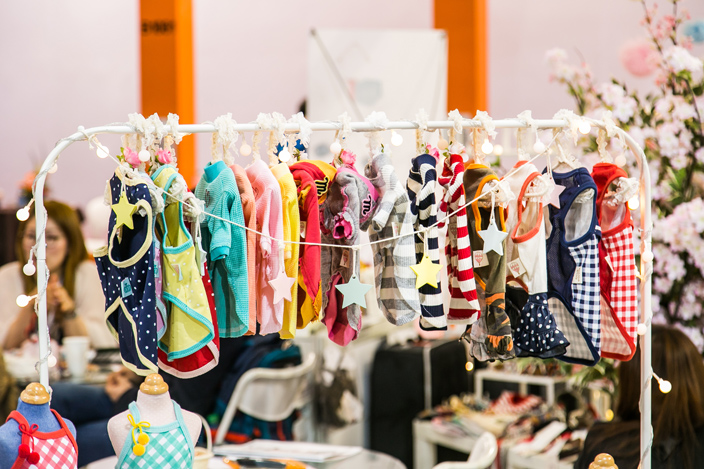
Everywhere around us, people are handing over credit cards, chatting to vendors, and stocking up on the latest gadgets. It all feels slightly insane, but maybe we just don’t love our cats enough.
“I definitely spend a few hundred kuai on Duo La every month,” says Mrs. Chen, a 60-something Shanghainese lady pointing at her poodle. “I just bought her a dress, and I always, always get her imported food.”
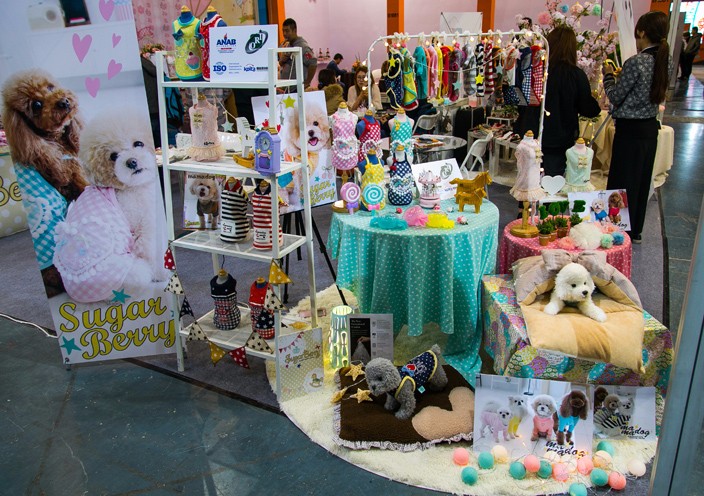
Pet beauty therapist Huang Yuwen, a 26-year-old whose two dogs (of the eight she owns) are attending SIPE’s competitions and beauty contests, also spends a big slice of her monthly income on her pets. “Food especially is very important to me,” she says. “I want to make sure they get the best quality.”
Pet food is indeed one of the most lucrative areas of the industry. Multinationals such as Mars, Nestlé, Procter & Gamble and Colgate-Palmolive have all rushed to the Chinese market, licking their lips at the possibility of profit. They are onto something: more data from Euromonitor reports that dog food sales are expected to almost triple to over USD760 million by 2019.
Over the past year, China has become a key market for companies to launch new pet food, an increasing amount of which is now marketed as organic and all-natural, according to Laurel Gu, manager at market research firm Mintel.
“A number of [pet food] manufacturers are developing new products specifically targeting China,” Gu says. “They see its strong growth potential. At the same time, people are increasingly drawn towards products’ health benefits for their pets, labels like ‘no additives’ and specialized foods.”
Other sectors are cashing in, too – particularly in the luxury field. Last year, leather brand Coach launched an entire collection of exclusive collars for pooches. American firm Chrome Bones, which specializes in Swarovski crystal-encrusted pet collars and leather carriers costing well above USD200, opened its first China franchise in Shanghai in 2014. It has since reported a steady monthly sales increase of 40 percent.
"My parents have a cat, and they treat her like another daughter."
Even the state-owned People’s Insurance Company of China (PICC) offers pet insurance policies, with annual premiums ranging from RMB450 up to RMB3,500 a year. In Shanghai, meanwhile, some funeral companies sell burial packages that include a limousine hearse, luxury coffin and flower arrangements for your deceased dog, for a mere RMB500 to RMB9,000.
It’s as if a craze is taking over first- and second-tier Chinese cities – one that expects owners to burn money on pets. They should, of course, be rigorously pure in breed. The Tibetan Mastiff – once the indulgence of choice for the country’s wealthy (a Chinese businessman allegedly paid USD2 million for one in 2014) – is no longer the hottest commodity in the dog world. But pet owners are still very sensitive about the purity of their companions.
“It’s a sign of class,” says Chen Yu, a 27-year-old sales executive who owns two Pekingese dogs. “For me, the purer the better, although of course there are plenty of people who don’t care much about that.”
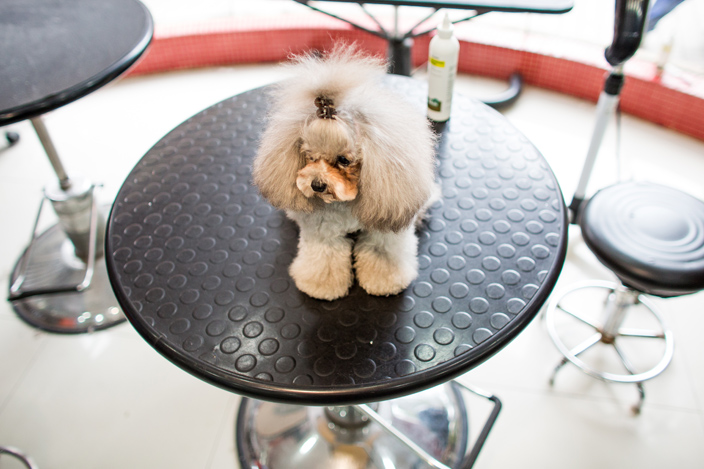
But breeds, food and accessories are just a small part of the picture. Pet grooming and pampering services are “skyrocketing” in first-tier cities, says Jiang Yuxuan, a dog beautician we meet at Naughty Family, an indemand Shanghai pet salon, training school and private clinic.
“On average, we style 40 pets – mostly dogs – a day, although during holiday season that number can go up to 60 or 70,” Jiang says. “We are always very busy.”
Services offered at Naughty Family span from hairstyling, spa services (i.e. ‘manicures’) to hair coloring, “especially before parties,” says Jiang. “We use the highest quality dye, so it doesn’t hurt the pet.”
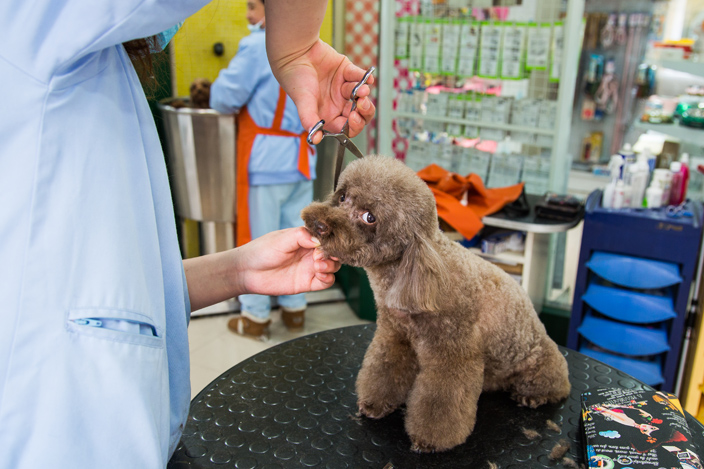
“Pets have become part of the family, and owners are willing to spend a lot on them,” says senior manager of Pet Fair Asia’s organizing committee, Grace Wu. “We want them to look good and be healthy, but we are also more attentive towards their needs, just like parents would be with their children.”
One of the industry’s latest trends is the rise of special care services aimed at the mental state of our furry friends, Wu explains.
“People are starting to be concerned about their pets’ moods, and whether they’re getting enough sleep,” she says.
“Companies are listening: there’s now a tracking device that allows you to check your dog’s daily patterns, and interact with him or her when you’re not home. Many of our exhibitors will be bringing products like that to the expo next August.”
But can such attachment to dogs and cats – one on a par with human family members – be healthy for pet owners? A psychologist from ACPC (the Association of Certified Psychologists of China), He Liang, is skeptical about of the phenomenon.
“In some cases, particularly with the ‘me-obsessed’ generation of the one-child policy, people just relish the idea of owning something that’s completely subordinate to their care,” says He. “It’s a way to feel in control of their own lives.”
The loneliness and stress endemic to city life means some Chinese urbanites, mostly single ones, see pets as substitutes for human companions, the psychologist explains.
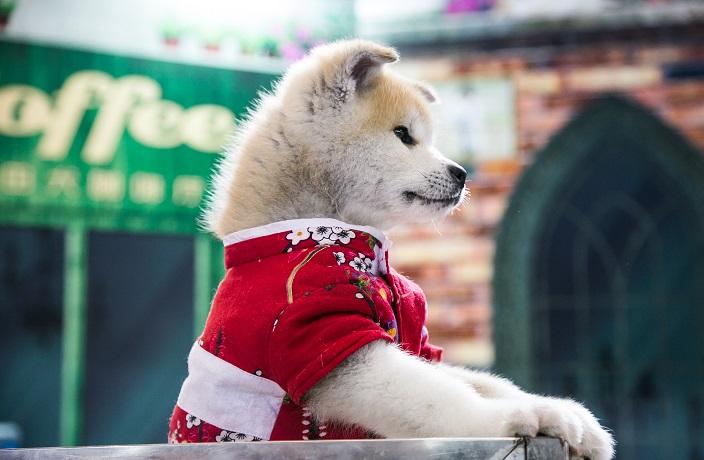
“Wanting to treat your pets well is normal and healthy,” he says. “But when pet-owners are willing to spend large sums on beauty makeovers, yet refuse to invest any time and money on maintaining regular social networking, we need to start worrying.”
It’s not just millennials who show excessive love for their animals, however. Approximately 61 percent of urban residents over 65 live with a pet, compared to the national average of 44 percent. Left alone, many elderly people in urban areas have replaced their child with a furry friend.
“My parents have a cat, and they treat her like another daughter,” says Chen, the poodleowner we met at SIPE. “I think she motivates them.”
As China’s pet market expands, so does the variety on offer. Last year, Pet Fair Asia had rabbits, hamsters, hedgehogs and parrots. The year before, someone brought in alpacas. This year, they’ll have “an entire hall dedicated to reptiles and amphibians,” says Wu. “We’re in the process of getting our licenses for that.”
Whether snakes and lizards will also need salon services is unclear. But if it’s going to happen anywhere, one suspects it will be China.
Additional reporting by Tongfei Zhang and Zoey Zha. Photos by Mario Grey.
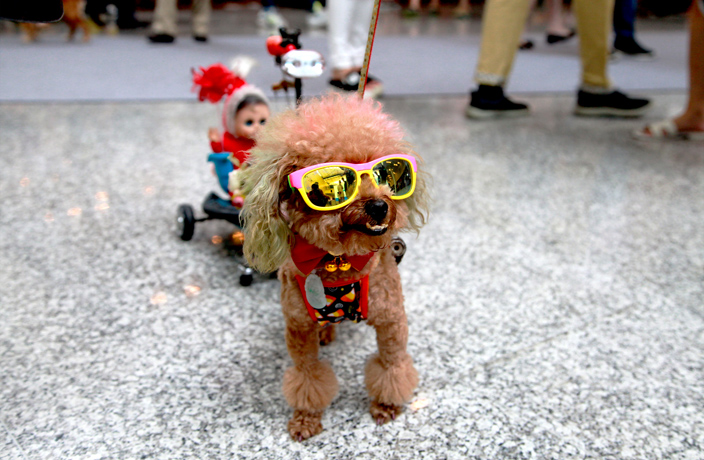





















0 User Comments